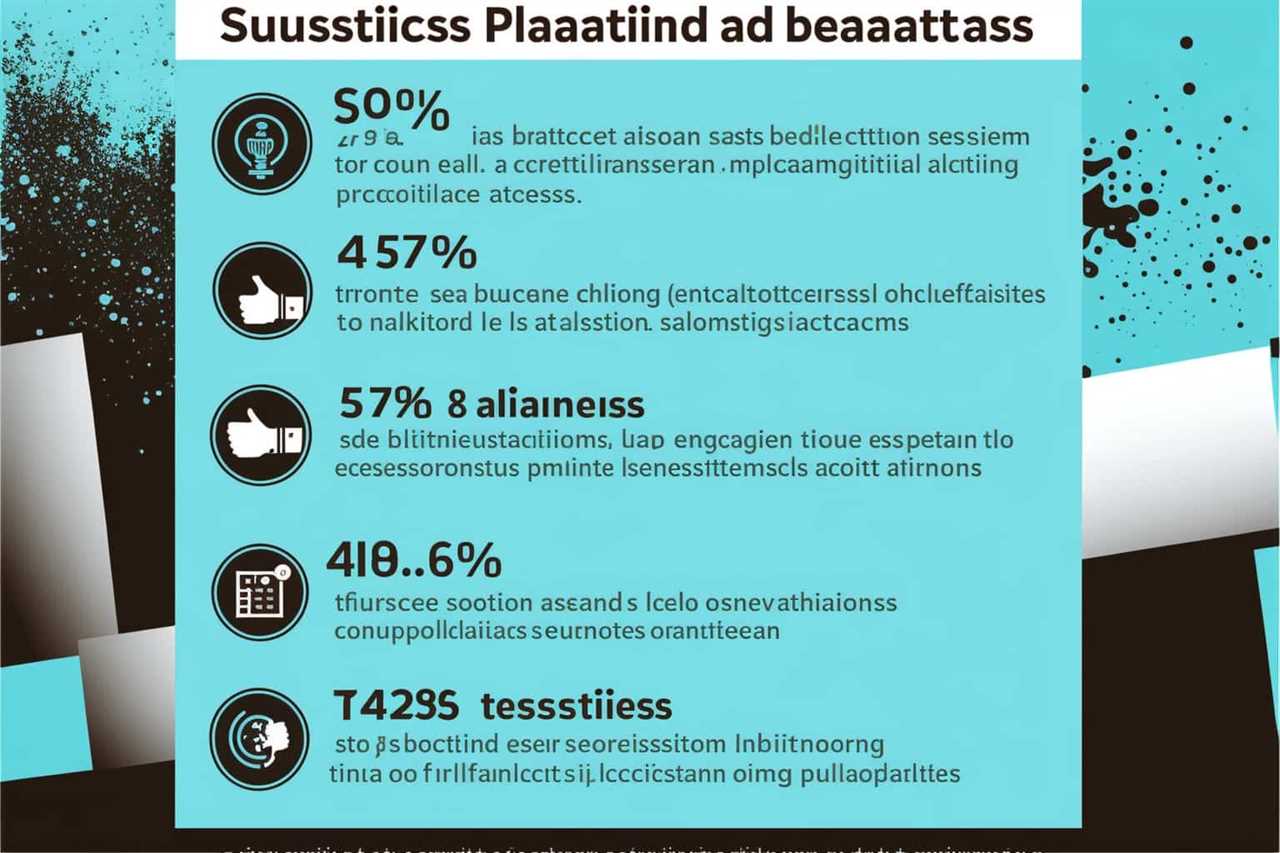AI in Business
Supercharge Your Bioinformatics Skills With AI

As a bioinformatics expert, I am always looking for chances to improve my skills and keep up with the latest advancements in science. One area that especially interests me is the integration of artificial intelligence (AI) in bioinformatics.
It’s like giving our analysis superpowers, revolutionizing the way we interpret biological data. With AI tools, we can compare cell characteristics faster and more quantitatively, accelerate analysis through adaptive learning, and even uncover hidden patterns.
In this article, I’ll dive into the world of AI-based tools for image analysis, explore the skills needed to bridge the gap between bioinformatics and AI, and discuss the challenges and considerations in adopting AI.
Get ready to supercharge your bioinformatics skills with AI.

Key Takeaways
- AI tools in bioinformatics enable faster and more quantitative comparison of cell characteristics.
- AI-based tools for image analysis, such as CellProfiler, ilastik, QuPath, and CDeep3M, automate image analyses and run machine-learning algorithms.
- Bioinformaticians interested in AI should focus on coding skills, particularly Python, and invest in mathematics and statistics abilities.
- Online tutorials, courses, and live training opportunities provide accessible learning options for acquiring AI skills in bioinformatics.
Benefits of AI in Bioinformatics
AI tools in bioinformatics offer numerous benefits to researchers. They provide a faster and more quantitative way to compare cell characteristics. These applications of AI in bioinformatics have the potential to revolutionize the field and pave the way for future advancements.
By utilizing AI, researchers can accelerate the analysis process through adaptive learning tailored to their specific needs. AI tools can also detect differences or modes of comparison that users may not have considered, expanding the scope of research possibilities.
Additionally, AI allows researchers to reason with biological images in high dimensions, transforming complex images into straightforward mathematics problems.
With the continuous development of AI technology, the future advancements in AI for bioinformatics hold great promise. They open up new avenues for exploration and discovery in the field.

Ai-Based Tools for Image Analysis
To delve into the realm of AI-based tools for image analysis, let me highlight some powerful resources that can enhance bioinformatics skills:
-
CellProfiler: This tool automates image analyses and runs machine-learning algorithms, making it easier to analyze biological images.
-
ilastik: With its user-friendly interface, ilastik allows for easy and efficient image analysis, particularly in the field of biomedical research.
-
QuPath: QuPath is a versatile tool that enables users to analyze and annotate digital pathology images, making it ideal for studying tissue samples.

-
CDeep3M: This tool utilizes deep learning applications to analyze and interpret complex biological images, enabling researchers to delve into high-dimensional data.
These AI-based tools provide researchers with the ability to analyze images in a more quantitative and efficient manner, making them essential resources for bioinformatics professionals.
Building Skills to Bridge the Gap
I focused on coding skills, particularly Python, to build a bridge between bioinformatics and AI. Coding skills are essential for bioinformaticians interested in incorporating AI into their work.
Python is a widely used programming language in bioinformatics due to its versatility and extensive libraries for data manipulation and analysis. By developing strong coding skills, bioinformaticians can effectively implement AI algorithms and develop reliable AI tools for bioinformatics.

Additionally, software engineering skills are crucial for ensuring the quality and reliability of these tools. Proficiency in software engineering principles, such as version control, testing, and documentation, is necessary to build robust AI applications in bioinformatics.
Learning Opportunities for AI in Bioinformatics
After focusing on coding skills and software engineering expertise to bridge the gap between bioinformatics and AI, I’m excited to explore the various learning opportunities available for incorporating AI into bioinformatics.
Here are some of the ways to learn about AI in bioinformatics:
-
Online learning platforms: Platforms like Coursera, edX, and Udacity offer accessible tutorials and courses specifically designed for learning AI in bioinformatics. These resources often include step-by-step videos and can be accessed for free.

-
Practical applications: Learning AI in bioinformatics involves understanding its practical applications. By exploring real-world case studies and working on projects, bioinformaticians can gain hands-on experience and develop a deeper understanding of how AI can be used effectively in this field.
-
Live and in-person learning opportunities: Organizations like EMBL-EBI offer live training sessions and in-person courses, providing individuals and groups with the chance to learn from experts and network with peers.
-
Formal education, self-study, and practical experience: Becoming proficient in using AI in bioinformatics requires a combination of formal education, self-study, and practical experience. By combining these approaches, bioinformaticians can gain a comprehensive understanding of AI and its applications in bioinformatics.
Challenges and Considerations in Adopting AI in Bioinformatics
Transitioning into the subtopic of ‘Challenges and Considerations in Adopting AI in Bioinformatics’, I encountered several obstacles and important factors to consider when integrating AI into this field.

One significant challenge is data management. Many researchers lack the necessary skills to effectively handle and organize large volumes of data, which can hinder the adoption of AI in bioinformatics.
Additionally, overcoming bias in AI analysis is a critical consideration. AI algorithms are prone to biases that can affect the accuracy and reliability of their results. It’s essential to carefully evaluate AI’s decisions, test it with known solutions, and address bias and variation in image analysis through mindful example selection.
Training Opportunities
What training opportunities are available to supercharge my bioinformatics skills with AI?
-
Online resources:

-
Universities and platforms like Coursera, edX, and Udacity offer accessible tutorials and courses for learning AI in bioinformatics.
-
These resources often include step-by-step videos and are either free or have affordable pricing options.
-
Practical experience:
-
Live and in-person learning opportunities, such as those offered by EMBL-EBI, provide hands-on training in AI for bioinformatics.

-
These courses may include accommodation and catering for in-person attendees.
-
Additionally, practical experience gained through self-study and formal education is crucial for becoming proficient in using AI in bioinformatics.
-
Free online courses:
-
The French government supports a free online course by scikit-learn, which takes approximately 35 hours to complete.

-
This course provides a comprehensive introduction to AI in bioinformatics.
-
Webinars and on-demand training:
-
EMBL-EBI offers free course materials, on-demand training, and online webinars that cover various aspects of AI in bioinformatics.
-
These resources are easily accessible and can be utilized at any time to enhance knowledge and skills.

Getting Started
To begin my journey into AI in bioinformatics, I started by exploring the available training opportunities and resources.
I discovered that there are various on-demand online courses and free online resources that provide a solid foundation in AI for bioinformatics. Platforms like Coursera, edX, and Udacity offer online tutorials and courses that are accessible to everyone.
These resources often include step-by-step videos and cover topics such as machine learning, deep learning, and data analysis. Additionally, EMBL-EBI offers free resources and on-demand online courses to everyone, making it easier to get started.
These training opportunities provide a convenient and flexible way to learn AI in bioinformatics, allowing individuals to enhance their skills at their own pace and convenience.

With these on-demand online courses and free online resources, anyone can take the first step towards supercharging their bioinformatics skills with AI.
Mitigating Limitations
After exploring the available training opportunities and resources, I’ll now address the limitations of AI in bioinformatics.
-
Delegating decision making: AI can help overcome human limitations by delegating biological-image analysis to machines. This allows for unbiased decision-making and reduces the impact of human biases.
-
Evaluating AI’s reasoning: It’s crucial to carefully evaluate the reasoning behind AI’s decisions. Understanding how AI arrived at a particular conclusion is essential for building trust and ensuring accurate results.

-
Testing AI with known solutions: To maintain confidence in AI, it’s important to test it with tasks where the solution is already known. This helps verify the accuracy of AI’s predictions and identify any potential issues.
-
Addressing bias and variation: Mindful selection of examples can help address bias and variation in image analysis. By including diverse and representative samples, we can improve the generalizability and reliability of AI algorithms.
Frequently Asked Questions
What Are Some Specific Examples of Ai-Based Tools Used in Bioinformatics for Image Analysis?
Some specific examples of AI-based tools used in bioinformatics for image analysis are CellProfiler, ilastik, QuPath, and CDeep3M. These tools automate image analyses, run machine-learning algorithms, and have user-friendly interfaces. They don’t require extensive coding expertise.
Data preprocessing is crucial in AI-based image analysis to ensure accurate and reliable results.

What Are Some Key Coding Skills That Bioinformaticians Interested in AI Should Focus On?
When it comes to coding skills for bioinformaticians interested in AI, there are a few key areas to focus on.
Firstly, mastering coding techniques, particularly in languages like Python, is essential.
Additionally, understanding machine learning algorithms and how they can be applied to bioinformatics is crucial.
Furthermore, having a solid foundation in software engineering and quality assurance will help in building reliable AI tools.

Lastly, investing in mathematics and statistics abilities will further advance a bioinformatician’s career in the field of AI.
Are There Any Free or Accessible Learning Opportunities for AI in Bioinformatics?
Yes, there are numerous free online courses and accessible learning opportunities for AI in bioinformatics.
These resources provide a platform to gain knowledge and skills in AI applications in genomics.
Platforms like Coursera, edX, and Udacity offer online tutorials and courses, many of which are free and include step-by-step videos.

Additionally, organizations like EMBL-EBI provide free resources and on-demand online courses for everyone.
These opportunities are essential for bioinformaticians interested in AI to enhance their skills and stay updated with the latest developments in the field.
What Are Some Challenges or Limitations in Adopting AI in Bioinformatics?
Challenges and limitations in adopting AI in bioinformatics include researchers lacking data-management skills, limited resources for implementing AI tools, and the need for careful consideration and planning during the transition. However, those who embrace AI in bioinformatics experience accelerated workflows and targeted decision-making in data analysis.
Wider adoption of AI tools can greatly benefit the field of bioinformatics. Overcoming human limitations and biases, evaluating AI’s decisions, and addressing bias and variation in image analysis are important considerations.

How Can Researchers Mitigate Bias and Variation in Image Analysis When Using AI Tools?
To mitigate bias and variation in image analysis when using AI tools, researchers can employ several strategies.
First, they can standardize the image analysis process by using carefully curated datasets and ensuring consistent preprocessing steps.
Additionally, researchers can validate AI models by comparing their predictions with known ground truth data or by conducting rigorous cross-validation experiments.
Regular model updates and retraining can also help address any biases or variations that may arise.

These approaches contribute to more reliable and accurate results in bioinformatics image analysis.
Conclusion
In conclusion, integrating AI into bioinformatics is an absolute game-changer. The benefits are immense, allowing for faster and more quantitative analysis of biological data, adaptive learning processes, and uncovering hidden patterns.
AI-based tools for image analysis are revolutionizing the way we reason with complex biological images.
By harnessing the power of AI, we can supercharge our bioinformatics skills and unlock groundbreaking insights in our research.

The future of bioinformatics is here, and AI is leading the way.
Hanna is the Editor in Chief at AI Smasher and is deeply passionate about AI and technology journalism. With a computer science background and a talent for storytelling, she effectively communicates complex AI topics to a broad audience. Committed to high editorial standards, Hanna also mentors young tech journalists. Outside her role, she stays updated in the AI field by attending conferences and engaging in think tanks. Hanna is open to connections.
AI in Business
Unveiling the Power of Sentiment Analysis in AI for Business

We made an exciting discovery: Sentiment analysis is revolutionizing AI for businesses.
Did you know that 85% of customers trust online reviews as much as personal recommendations?
In this article, we’ll delve into the power of sentiment analysis in the world of business AI. By harnessing the capabilities of natural language processing, sentiment analysis enables companies to analyze and interpret customer opinions and emotions.
Join us as we explore the benefits, techniques, applications, challenges, and future directions of sentiment analysis for business AI.
![]()
Key Takeaways
- Sentiment analysis helps businesses understand customer attitudes and opinions towards their products or services.
- Natural Language Processing (NLP) algorithms and machine learning models are used in sentiment analysis to analyze and interpret large amounts of text data.
- NLP enables businesses to efficiently process and understand social media sentiment, providing real-time monitoring and reliable insights.
- Sentiment analysis has real-world applications in monitoring public sentiment, improving customer satisfaction, and aiding in reputation management.
Overview of Sentiment Analysis in Business AI
In our article, we’ll provide a comprehensive overview of the role and significance of sentiment analysis in AI for businesses.
Sentiment analysis is a powerful technique that helps organizations extract valuable insights from customer feedback and online conversations. By analyzing sentiment, companies can understand customer opinions, emotions, and attitudes towards their products or services.
There are various sentiment analysis techniques available, including rule-based, machine learning, and hybrid approaches. These techniques involve the use of sentiment analysis tools, such as Natural Language Processing (NLP) algorithms, lexicons, and machine learning models. These tools help automate the process of sentiment analysis and can handle large volumes of data efficiently.
With sentiment analysis, businesses can make data-driven decisions, improve customer satisfaction, identify emerging trends, and enhance their overall brand reputation.

Benefits of Natural Language Processing in Sentiment Analysis
One significant benefit of Natural Language Processing (NLP) in sentiment analysis is its ability to accurately analyze and interpret large amounts of text data. NLP techniques enable businesses to efficiently process and understand social media sentiment, allowing them to gain valuable insights into public opinion and customer satisfaction.
Some benefits of NLP in sentiment analysis include:
-
Improved accuracy: NLP algorithms can identify and analyze sentiment with a high degree of precision and accuracy, providing businesses with reliable insights.
-
Efficient data processing: NLP enables businesses to process and analyze large volumes of text data in a relatively short amount of time, saving valuable resources.

-
Real-time monitoring: NLP techniques allow businesses to track social media sentiment in real-time, enabling them to respond promptly to customer feedback and concerns.
-
Enhanced decision-making: By leveraging NLP in sentiment analysis, businesses can make data-driven decisions based on a comprehensive understanding of customer sentiment and preferences.
Techniques for Training Sentiment Analysis Models
To effectively train sentiment analysis models, we employ various techniques that allow us to extract meaningful insights from large amounts of textual data.
One popular technique is transfer learning, which involves leveraging pre-trained models on vast datasets and fine-tuning them for specific sentiment analysis tasks. By using transfer learning, we can benefit from the knowledge and patterns learned by these models on general language understanding, saving time and resources.

Another technique is feature extraction, where we extract relevant features from the text that can help us classify sentiment. These features can include word frequencies, n-grams, or even more complex linguistic features like sentiment lexicons. By selecting and extracting the right features, we can enhance the accuracy and performance of our sentiment analysis models, making them more effective in understanding and classifying sentiment in textual data.
Real-world Applications of Sentiment Analysis in Business AI
Using transfer learning and feature extraction techniques, we can now explore real-world applications of sentiment analysis in business AI.
Sentiment analysis in social media allows companies to monitor and analyze public sentiment towards their brand, products, and services. By analyzing social media posts, comments, and reviews, businesses can gain valuable insights into customer opinions and identify trends and patterns.
Sentiment analysis in customer reviews helps companies understand customer satisfaction levels and identify areas for improvement. It enables companies to proactively address any negative feedback and improve customer experience.

Additionally, sentiment analysis can be used for reputation management, allowing businesses to track and manage their online reputation by identifying and addressing any negative sentiment.
Challenges and Future Directions in Sentiment Analysis for Business AI
As we delve into the challenges and future directions of sentiment analysis for business AI, we continue to explore its applications and the potential it holds for enhancing customer satisfaction and strategic decision-making.
Looking ahead, future advancements in sentiment analysis will likely focus on improving accuracy and reliability. This includes developing more sophisticated algorithms that can better understand complex emotions and subtle nuances in text. Additionally, advancements in natural language processing and machine learning techniques will enable sentiment analysis systems to become more context-aware, taking into account factors such as sarcasm and irony.
However, with these advancements also come ethical implications. As sentiment analysis becomes more powerful and pervasive, there’s a need to address issues of privacy, bias, and the responsible use of customer data. Striking the right balance between innovation and ethical considerations will be crucial for the future of sentiment analysis in business AI.

Frequently Asked Questions
Can Sentiment Analysis Be Used in Industries Other Than Business Ai?
Sentiment analysis can indeed be applied in industries beyond business AI. For instance, sentiment analysis finds use in healthcare by analyzing patient feedback. Furthermore, it is employed in political campaigns to gauge public opinion and tailor messaging accordingly.
What Are the Limitations of Using Natural Language Processing in Sentiment Analysis?
Sentiment analysis accuracy and challenges in natural language processing include bias, sarcasm, and context understanding. These limitations hinder the ability to accurately interpret emotions, making sentiment analysis a complex task in AI for business.
How Long Does It Typically Take to Train a Sentiment Analysis Model?
Training time for sentiment analysis models varies depending on the dataset size and complexity. Generally, it takes a few hours to a few days. However, longer training times can lead to higher model accuracy, ensuring reliable sentiment analysis results.
Are There Any Ethical Concerns Surrounding the Use of Sentiment Analysis in Business Ai?
There are ethical implications and privacy concerns surrounding the use of sentiment analysis in business AI. We must consider the potential misuse of personal data and the potential for biased or discriminatory outcomes.

What Are the Potential Future Advancements and Developments in Sentiment Analysis for Business Ai?
In the future, we can expect exciting advancements and developments in sentiment analysis for business AI. AI technologies will continue to evolve, enabling more accurate and nuanced analysis of sentiment, leading to better decision-making and customer insights.
Conclusion
In conclusion, sentiment analysis holds immense potential in shaping the future of AI for business. By harnessing the power of natural language processing techniques, organizations can gain valuable insights into customer sentiments, enabling them to make data-driven decisions.
However, like any evolving technology, sentiment analysis faces challenges and requires continual advancements. As the field progresses, it’s crucial for researchers and practitioners to address these challenges and explore new avenues to further enhance the accuracy and applicability of sentiment analysis in the realm of business AI.
Hanna is the Editor in Chief at AI Smasher and is deeply passionate about AI and technology journalism. With a computer science background and a talent for storytelling, she effectively communicates complex AI topics to a broad audience. Committed to high editorial standards, Hanna also mentors young tech journalists. Outside her role, she stays updated in the AI field by attending conferences and engaging in think tanks. Hanna is open to connections.
AI in Business
Why Natural Language Processing Is a Game-Changer for Customer Experience

Imagine a situation where customer interactions are improved, understanding of customer needs is increased, and customer support becomes more effective. Enter the world of Natural Language Processing (NLP).
With NLP technology, we can transform customer experiences into personalized journeys. Through the power of language processing, we can unlock a new level of customer satisfaction.
In this article, we will explore why NLP is revolutionizing the way businesses connect with their customers. Get ready to embark on a journey towards mastery in customer experience.
Key Takeaways
- AI chatbots revolutionize customer service by providing automated support.
- Natural language processing enables accurate interpretation of customer intents.
- NLP technology helps businesses enhance their services according to customer needs.
- NLP technology contributes to a positive customer experience.
Enhanced Customer Interactions Through AI
We have witnessed a significant improvement in customer interactions through the implementation of AI technologies.

AI powered chatbots have revolutionized the way businesses handle customer queries and concerns. These chatbots provide automated customer service, allowing businesses to respond to customer inquiries promptly and efficiently.
By leveraging advanced natural language processing techniques, AI chatbots can understand and interpret customer intents accurately, providing personalized and relevant responses. Additionally, sentiment analysis is used for feedback analysis, enabling businesses to gauge customer satisfaction levels and identify areas for improvement.
This valuable insight helps companies tailor their products and services to meet customer needs effectively. Furthermore, AI technologies enable proactive customer engagement, allowing businesses to anticipate customer needs and provide proactive support.
Improved Understanding of Customer Needs
By implementing natural language processing, businesses can gain a deeper understanding of their customers’ needs. This enhanced customer insights allows companies to optimize their product recommendations and deliver a more personalized experience. Natural language processing enables businesses to analyze large volumes of customer data, such as reviews, feedback, and social media interactions, to identify patterns and trends. This deeper understanding of customer needs enables businesses to tailor their products and services to meet specific demands. Through the use of advanced algorithms, businesses can generate optimized product recommendations, increasing the likelihood of customer satisfaction and loyalty. The following table illustrates how natural language processing can enhance customer insights and optimize product recommendations:

| Enhanced Customer Insights | Optimized Product Recommendations | Improved Customer Experience |
|---|---|---|
| Analyzing customer data | Generating personalized suggestions | Meeting specific demands |
| Identifying patterns and trends | Increasing customer satisfaction | Enhancing customer loyalty |
| Tailoring products and services | Improving customer retention | Delivering personalized experiences |
Streamlined Customer Support With NLP
Implementing natural language processing (NLP) in customer support offers several benefits. One key advantage is the use of an automated ticketing system, which categorizes and routes customer inquiries to the appropriate department or agent. This reduces manual effort and response times, improving efficiency and ensuring faster and more accurate support for customers.
Another advantage of NLP is the integration of chatbots. These virtual assistants can understand and respond to customer queries in a conversational manner. Equipped with NLP capabilities, chatbots provide instant assistance, answer frequently asked questions, and handle basic tasks. This frees up human agents to focus on more complex customer issues.
Personalized Customer Experiences With Language Processing
One of the key benefits of language processing is its ability to provide personalized customer experiences. By analyzing customer data and understanding their preferences, businesses can tailor their marketing strategies to individual customers.
Language processing allows companies to gather valuable insights from social media platforms, enabling them to understand customer sentiment and engage with their audience effectively. With the help of language processing in social media, businesses can identify customer needs, interests, and buying behaviors, allowing them to deliver targeted and personalized marketing messages.

This not only enhances the customer experience but also increases the likelihood of conversion and customer loyalty. By utilizing language processing technologies, businesses can create personalized marketing strategies that resonate with their customers, ultimately leading to increased customer satisfaction with NLP technology.
Increased Customer Satisfaction With NLP Technology
With the implementation of natural language processing technology, we can significantly enhance customer satisfaction.
NLP applications in sales and marketing have revolutionized the way businesses interact with their customers. By analyzing and understanding customer feedback, NLP technology helps companies identify pain points and areas for improvement. This enables them to offer personalized solutions and address customer concerns more effectively.
In addition, NLP’s impact on customer loyalty can’t be underestimated. By providing real-time support and personalized recommendations, NLP technology builds trust and strengthens the customer-business relationship. Customers feel valued and understood, leading to increased satisfaction and loyalty.

Furthermore, NLP technology allows businesses to gather valuable insights from customer conversations, which can be used to improve products, services, and overall customer experience.
Frequently Asked Questions
How Does Natural Language Processing Enhance Customer Interactions Through Ai?
Natural language processing improves chatbots and enhances sentiment analysis, allowing us to better understand and respond to customer interactions. By leveraging AI, it revolutionizes customer experience by providing personalized and efficient communication.
How Does NLP Technology Improve Understanding of Customer Needs?
Improving customer interactions and enhancing customer feedback analysis, NLP technology enables us to better understand customer needs. It helps us analyze and interpret their language, leading to more personalized and effective customer experiences.
What Are the Benefits of Streamlined Customer Support With Nlp?
Efficiency and automation are the benefits of streamlined customer support with NLP. It helps us provide faster and more accurate responses, improving customer satisfaction and allowing us to handle a higher volume of inquiries.

How Does Language Processing Enable Personalized Customer Experiences?
Language processing enables personalized customer experiences by adopting a customer centric approach and providing personalized recommendations. By understanding and analyzing customer data, NLP allows us to tailor interactions and offer relevant solutions, enhancing overall satisfaction.
What Are the Ways in Which NLP Technology Increases Customer Satisfaction?
Improved communication and enhanced problem solving are some ways in which NLP technology increases customer satisfaction. It allows us to understand and respond to customer needs more effectively, leading to a more personalized and efficient customer experience.
Conclusion
In conclusion, natural language processing is a total game-changer for customer experience. With AI-enhanced interactions, businesses can better understand customer needs and provide streamlined support.
This technology allows for personalized experiences and ultimately leads to increased customer satisfaction.

So, if you want your customers to be as happy as a kid in a candy store, incorporating NLP into your customer service strategy is a no-brainer. Trust me, they’ll be singing your praises like a choir of angels.
Hanna is the Editor in Chief at AI Smasher and is deeply passionate about AI and technology journalism. With a computer science background and a talent for storytelling, she effectively communicates complex AI topics to a broad audience. Committed to high editorial standards, Hanna also mentors young tech journalists. Outside her role, she stays updated in the AI field by attending conferences and engaging in think tanks. Hanna is open to connections.
AI in Business
Humane’s AI Pin: A Closer Look at the Revolutionary Wearable


Time Magazine Recognizes AI Pin as a Top Invention of 2023
Humane, the innovative technology company, is gearing up for the launch of its highly anticipated AI Pin on November 9th. To much surprise, the device has already been honored as one of Time Magazine’s “Best Inventions of 2023,” alongside other cutting-edge gadgets such as the Framework Laptop 16 and the Samsung Galaxy Z Flip 5. This recognition has heightened the excitement surrounding the AI Pin, providing us with a more detailed look at this revolutionary wearable.
The AI Pin: A Fusion of Style and Intelligent Technology
While details have been scarce, the latest write-up provides some intriguing insights into the AI Pin. The device is designed to attach magnetically to your clothing, offering a seamless integration into your everyday life. Powered by a combination of proprietary software and OpenAI’s GPT-4, the AI Pin boasts a range of impressive features.
Trust Light: Ensuring Privacy and Transparency
One standout feature of the AI Pin is its “Trust Light.” This illuminated indicator activates whenever the device’s camera, microphone, or other sensors are recording data. This transparency aims to address concerns about privacy and data collection, setting the AI Pin apart from its competitors.
A New Kind of Wearable: The Promise of the AI Pin
Humane has been building anticipation for the AI Pin for months, starting with a captivating TED talk by co-founder Imran Chaudhri in April. Chaudhri described the AI Pin as a “new kind of wearable device and platform,” emphasizing that it operates independently of smartphones or other devices. This bold claim has left many intrigued about the inner workings and functionality of the AI Pin.

A Race to Revolutionize AI-Powered Gadgets
While Humane has generated significant buzz around its upcoming release, it faces fierce competition in the AI gadget market. Other companies, such as Rewind and a collaboration between Sam Altman and Jony Ive, are also vying to create innovative devices that harness the power of artificial intelligence. Additionally, the rapid growth of smart glasses with AI assistants, spearheaded by Meta and Amazon, has contributed to an industry-wide push to explore the potential of AI-powered hardware.
Unveiling the Future: Launching on November 9th
Despite the lingering questions surrounding its functionality, the AI Pin remains on track for its highly anticipated launch on November 9th. As the unveiling date approaches, we eagerly await a deeper understanding of what the AI Pin can do and how it will enhance our daily lives. Will this be the wearable of the future? Only time will tell.
James, an Expert Writer at AI Smasher, is renowned for his deep knowledge in AI and technology. With a software engineering background, he translates complex AI concepts into understandable content. Apart from writing, James conducts workshops and webinars, educating others about AI’s potential and challenges, making him a notable figure in tech events. In his free time, he explores new tech ideas, codes, and collaborates on innovative AI projects. James welcomes inquiries.
-

 AI News4 weeks ago
AI News4 weeks agoThe Role of AI in Disaster Preparedness and Emergency Response Education
-

 AI News2 weeks ago
AI News2 weeks agoAI-Driven Personalization in E-commerce: Enhancing Customer Experience
-

 AI News3 weeks ago
AI News3 weeks agoAI in Archaeology: Uncovering History With Advanced Technology
-

 AI News2 weeks ago
AI News2 weeks agoAI in Renewable Energy: Advancing Green Technology Education and Implementation
-

 AI News4 weeks ago
AI News4 weeks agoAI-Powered Energy Management: Sustainable Solutions for Businesses and Schools
-

 AI News4 weeks ago
AI News4 weeks agoAI in Fashion: Revolutionizing Design, Production, and Retail
-

 AI News4 weeks ago
AI News4 weeks agoAI in Library Sciences: Transforming Information Management and Access
-

 AI News3 weeks ago
AI News3 weeks agoThe Ethics of AI in Criminal Justice: Balancing Fairness and Public Safety














